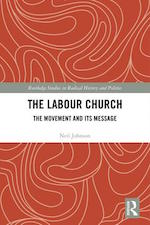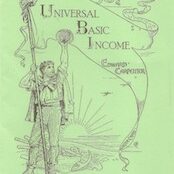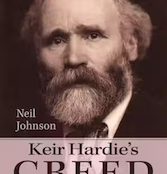BARRY WINTER reviews a new book on the Labour Church, and suggests the much-forgotten movement provides an important guide on how to remake left politics in the modern age.
Huddersfield-born Labour leader, Harold Wilson famously declared that the British Labour movement owes more to Methodism than Marxism. While he was right to recognise the religious influences upon many early socialists, it would be wrong to presume this meant they were not very radical. As Paul Mason once tweeted, “If people only knew how revolutionary Methodism was!” The socialist historian, Edward Thompson would have agreed.
Strictly speaking, however, we should be talking about the broader nonconformist tradition, rather than just Methodism. Arguably, this tradition has received less attention by the left in recent years. If so, The Labour Church: The Movement and its Message by Neil Johnson makes up for this.
Based on the author’s doctorate, this is an academic study and seeks to challenge some earlier evaluations. However, it is his research into the Labour Church’s local activities (which spread to Canada and the US) that is particularly valuable and impressive.
From memory, two ILP events evoked for me the spirit of the earlier Labour movement. First, when I was a speaker at the Bradford Socialist Sunday School in the 1980s with its socialist hymns and commandments. The other was a formal naming ceremony, when Nelson ILPer Stan Iveson welcomed a new-born child into the community at our annual conference. Both occasions reminded me of my own youthful and short-lived forays into non-conformism in Stoke.
John Trevor’s outlook
The Labour Church was founded in 1891 by John Trevor. He sought to blend religion and radical politics as the basis of the new society of justice and freedom that seemed to him – and many others – imminent. He edited its official monthly publication, the aptly titled Labour Prophet.
When the ILP was founded in January 1893, its inaugural conference was in a building leased and operated by the Bradford Labour Church. As Johnson notes: “The Labour Church service which followed the conference attracted thousands and was attended by Keir Hardie and George Bernard Shaw.”
The same year the Labour Church held its first national conference in Manchester with representatives from 31 congregations from the Midlands, Lancashire and Yorkshire. Two years later there were 54 congregations from across the country, but mostly in northern England. Churches in South Wales and Scotland then followed.
Johnson states that the cornerstone of Trevor’s outlook was that God “was working in and through the labour movement”, making it a religious force as well as a political one. For him, the Labour Church was both post-Christian and the vanguard for change. He had very little to say about Christ.
As a result, it was not long before sections of the membership, often drawn from church and chapel, began to reject his strict interpretation. Many sought a much looser approach to beliefs than Trevor’s vision allowed. They preferred a more inclusive and open-ended approach. They wanted to attract socialists who had become alienated from Christian dominations but who remained Christians. They wanted to find a spiritual home, Johnson explains, without it being rigidly defined. For them, the idea that God was in the labour movement was a powerful and sufficient message.
Added to this, Trevor wanted to loosen its connections with the ILP after its poor showing in the 1895 general election. He felt that the religious nature of the Labour Church was threatened by its close association with the party. As a result of all these tensions, he began to withdraw from the Labour Church. The membership was then freer to widen the scope of its activities and recruits. It was able to adopt a more relaxed approach about specific beliefs and, at the same time, firmed up its links with the ILP at local level.
The Church and the Clarion
In 1894 a partnership was established between the Clarion movement and the Birmingham Labour Church. Johnson records that within a few months Clarion cycle clubs spread from Birmingham to the Potteries, Liverpool, Bradford and Barnsley. By 1895 there were 30 clubs operating. In many places the two organisations gave each other support, although the tensions between the ebullient Robert Blatchford, the editor of The Clarion, and John Trevor did not help matters.
The strongest bonds between the Labour Church and the Clarion movement came with the Cinderella Clubs which provided support and educational activities for children of the slums. As a result by 1897, Birmingham had the largest Labour Church membership. Birmingham also had the largest club in Britain providing children with over 14,000 meals in three years. In the same period, 1,200 children were taken on day trips to the countryside and 35 disabled youngsters were taken to a holiday cottage.
Birmingham was also a centre of cooperation between the local churches and the ILP, although it was not always sweetness and light. Nationally, ILP branches were encouraged to hold Sunday meetings under the auspices of the Labour Church.
Another important feature of the Labour Church was the opportunities it provided for women. Johnson mentions that Isabella Ford, Katherine St John Conway (later Katherine Bruce Glasier), Enid Stacy, Margaret McMillan and Caroline Martin, all ILPers, were frequent contributors to the Labour Prophet. They were also regular speakers at local Labour Churches. Their messages challenged the male dominance in British culture.
Another ILPer who was active in her local Labour Churches was Hannah Mitchell. In her autobiography (sadly only published after her death) she wrote that the early labour movement, the ILP in particular, “was truly a movement, most remarkable for the quality of its communal life which it brought to its members. It was never doctrinaire and thus encouraged a wide-ranging discussion on political, social, cultural and religious topics.”
As Johnson argues, what “underpinned the ILP were ethical and humanitarian motives”. He also provides evidence to show that while the Labour Church began to decline before the First World War, there remained places where its influence – and activities – continued. By the mid-1920s Birmingham had 16 congregations.
This is an impressive account of a movement that has almost been forgotten, a reminder that attempts to oversimplify the rich history of the labour movement – and the origins of the Labour Party – devalue these earlier struggles. They provide important guides on how to remake left politics – not, of course, in the same mould, but rather as inspiration, a means to re-energise a modern and inclusive movement for genuine change.
—-
Labour Church: The Movement and its Message, by Neil Johnson, is published by Routledge.



